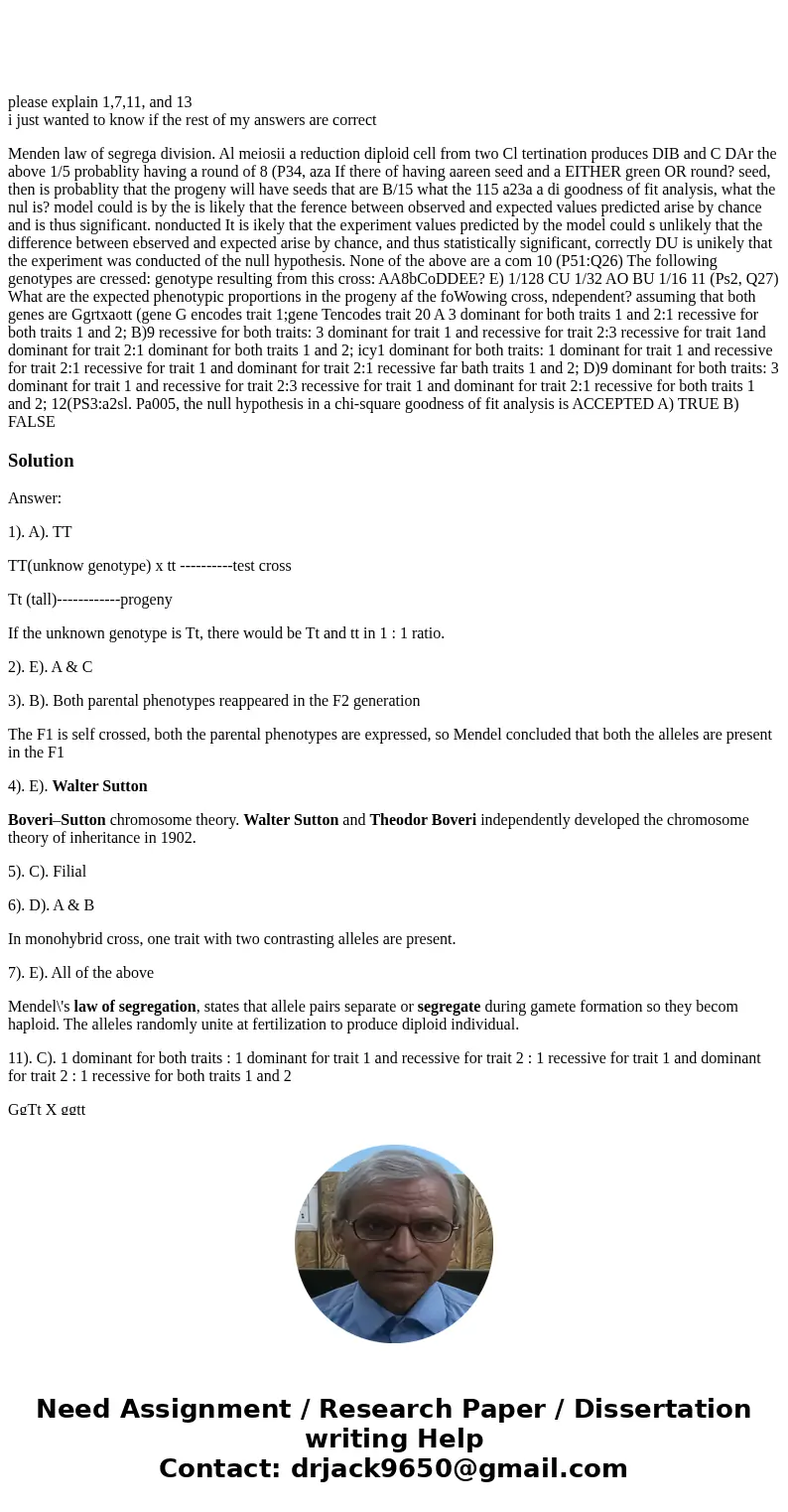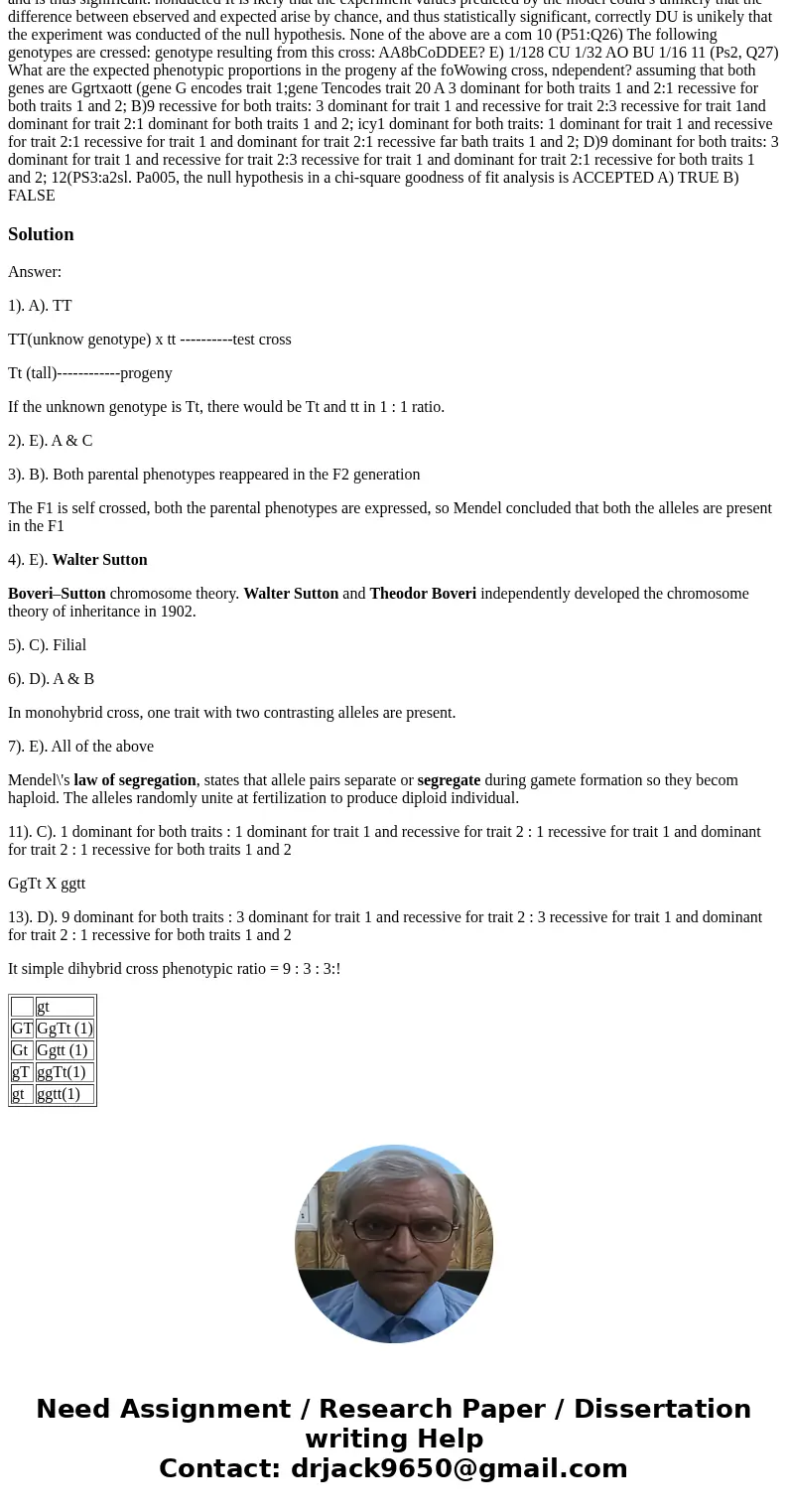please explain 1,7,11, and 13
i just wanted to know if the rest of my answers are correct
Menden law of segrega division. Al meiosii a reduction diploid cell from two Cl tertination produces DIB and C DAr the above 1/5 probablity having a round of 8 (P34, aza If there of having aareen seed and a EITHER green OR round? seed, then is probablity that the progeny will have seeds that are B/15 what the 115 a23a a di goodness of fit analysis, what the nul is? model could is by the is likely that the ference between observed and expected values predicted arise by chance and is thus significant. nonducted It is ikely that the experiment values predicted by the model could s unlikely that the difference between ebserved and expected arise by chance, and thus statistically significant, correctly DU is unikely that the experiment was conducted of the null hypothesis. None of the above are a com 10 (P51:Q26) The following genotypes are cressed: genotype resulting from this cross: AA8bCoDDEE? E) 1/128 CU 1/32 AO BU 1/16 11 (Ps2, Q27) What are the expected phenotypic proportions in the progeny af the foWowing cross, ndependent? assuming that both genes are Ggrtxaott (gene G encodes trait 1;gene Tencodes trait 20 A 3 dominant for both traits 1 and 2:1 recessive for both traits 1 and 2; B)9 recessive for both traits: 3 dominant for trait 1 and recessive for trait 2:3 recessive for trait 1and dominant for trait 2:1 dominant for both traits 1 and 2; icy1 dominant for both traits: 1 dominant for trait 1 and recessive for trait 2:1 recessive for trait 1 and dominant for trait 2:1 recessive far bath traits 1 and 2; D)9 dominant for both traits: 3 dominant for trait 1 and recessive for trait 2:3 recessive for trait 1 and dominant for trait 2:1 recessive for both traits 1 and 2; 12(PS3:a2sl. Pa005, the null hypothesis in a chi-square goodness of fit analysis is ACCEPTED A) TRUE B) FALSE
Answer:
1). A). TT
TT(unknow genotype) x tt ----------test cross
Tt (tall)------------progeny
If the unknown genotype is Tt, there would be Tt and tt in 1 : 1 ratio.
2). E). A & C
3). B). Both parental phenotypes reappeared in the F2 generation
The F1 is self crossed, both the parental phenotypes are expressed, so Mendel concluded that both the alleles are present in the F1
4). E). Walter Sutton
Boveri–Sutton chromosome theory. Walter Sutton and Theodor Boveri independently developed the chromosome theory of inheritance in 1902.
5). C). Filial
6). D). A & B
In monohybrid cross, one trait with two contrasting alleles are present.
7). E). All of the above
Mendel\'s law of segregation, states that allele pairs separate or segregate during gamete formation so they becom haploid. The alleles randomly unite at fertilization to produce diploid individual.
11). C). 1 dominant for both traits : 1 dominant for trait 1 and recessive for trait 2 : 1 recessive for trait 1 and dominant for trait 2 : 1 recessive for both traits 1 and 2
GgTt X ggtt
13). D). 9 dominant for both traits : 3 dominant for trait 1 and recessive for trait 2 : 3 recessive for trait 1 and dominant for trait 2 : 1 recessive for both traits 1 and 2
It simple dihybrid cross phenotypic ratio = 9 : 3 : 3:!
| gt |
| GT | GgTt (1) |
| Gt | Ggtt (1) |
| gT | ggTt(1) |
| gt | ggtt(1) |


 Homework Sourse
Homework Sourse